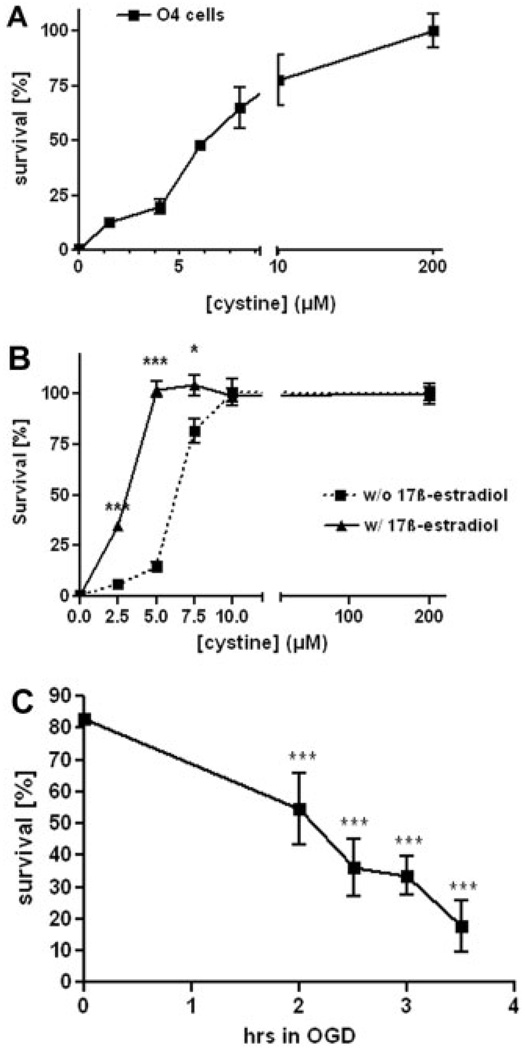Fig. 1.
Protective effect of E2 against oxidative injury caused by cystine deprivation. A: Concentration dependence of cystine deprivation toxicity on rat OLs in culture. Developing OLs (O4+) were cultured for 24 hr in culture medium containing cystine at selected concentrations and then were assayed for cell survival using Alamar Blue. Normal cystine content in the culture medium was 200 µm. Values shown are mean ± SEM from a single representative experiment of three that was performed. The EC50 value for cystine as a survival agent in this experiment was 4.3 ± 1.9 µM. B: E2 (1 µM) significantly protected against oxidative injury induced by cystine deprivation in culture medium containing 2.5–7.5 µM cystine. At lower cystine concentrations the protective effect of E2 was no longer detectable. At higher concentrations the induced oxidative stress was negligible and did not lead to significant cell death in comparison with cells kept in normal culture medium. Values shown are mean ± SEM from a single representative experiment of three that were performed with one-way ANOVA with Tukey’s multiple-comparison test (*P < 0.05, ***P < 0.001). C: Time dependence of OGD-induced death in developing oligodendrocytes. Primary oligodendrocyte viability was measured by LDH release, after 2, 2.5, 3, and 3.5 hr of OGD. Values shown are mean ± SEM of three independent experiments performed, anlayzed by one-way ANOVA with Tukey’s multiple-comparison test (***P < 0.001).

